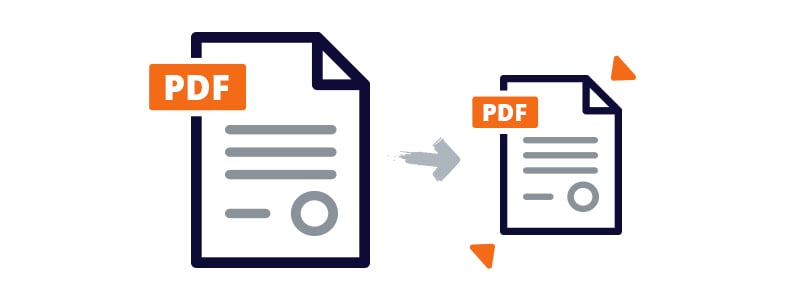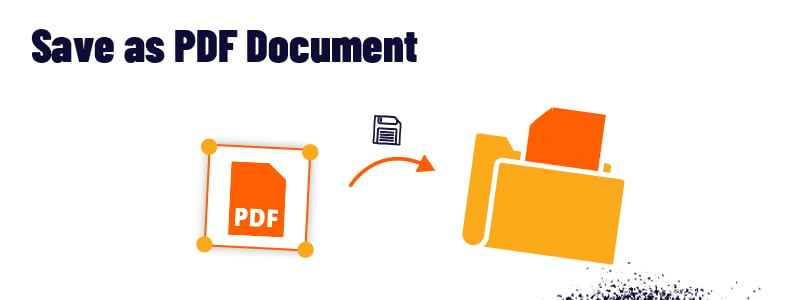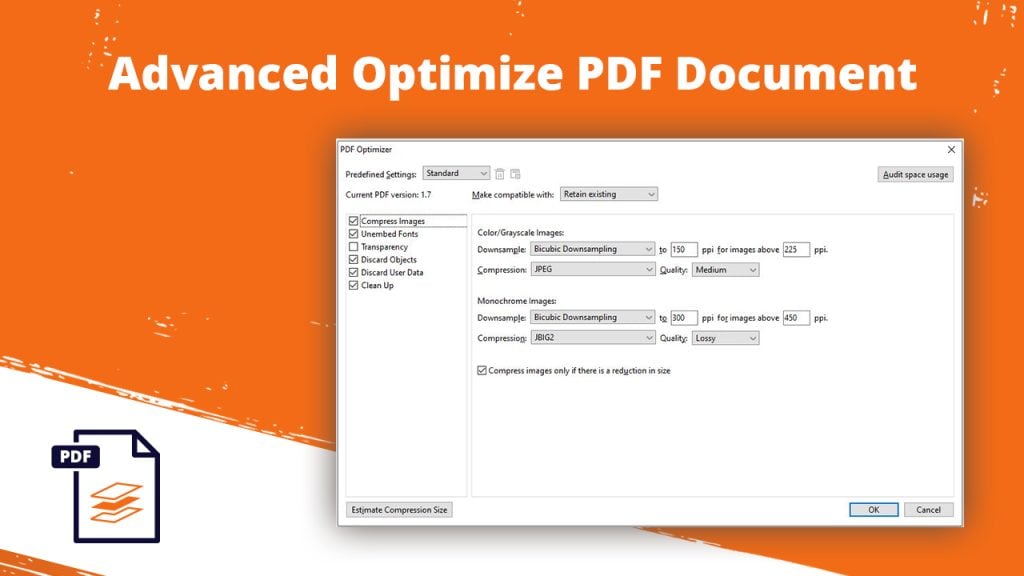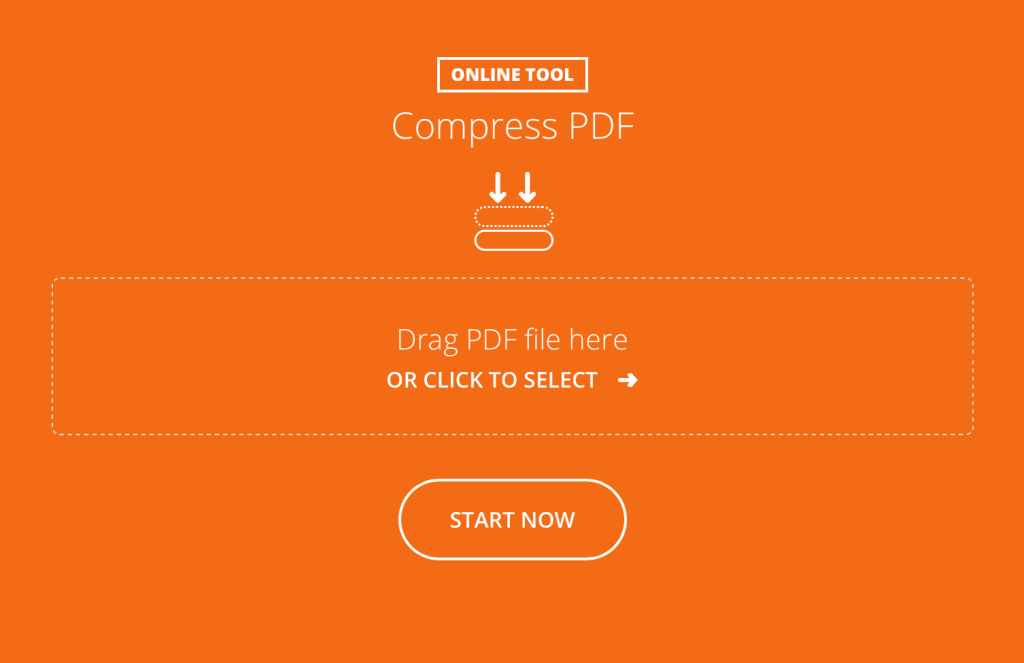- December 5, 2023
- Ahmed Rashid, Digital Marketing Team

How do you reduce PDF size without degrading quality? A lot of people ask that question about PDF compression. The good news is, it’s not that difficult. You can choose from multiple ways to compress PDF.
In fact, if you’ve ever compressed some images or videos to save space, you can compress PDFs similarly.
This post will teach you the best methods to compress a PDF. Included are both easy and advanced methods of PDF compression.

Choose from a number of different ways to reduce PDF size
We’ll look at each one of these options.
Use “Save As” instead of “Save.“
Export PDF files using a PDF editor.
Reduce the size of PDF files by using a PDF compression tool.
Optimize PDF files using the advanced settings of your PDF editor.
Remove unwanted objects from your PDF document.
Compress images in your PDF document.
You can choose among these methods to compress PDF files and determine which method or methods work best for your needs.
How Does PDF Compression Work?
PDF compression tools use algorithms to reduce PDF file size by finding and eliminating redundant data that can be compressed without affecting the quality of the original too drastically. This reproduces the file with fewer pixels for images and other graphics.
By removing redundant data, file sizes are reduced drastically. Reducing file sizes allows for easier emailing, uploading, downloading, and faster access.
One thing to know: when you compress PDF, you may also be unable to restore a compressed file to its original form, so it’s a good idea to make a backup before you perform PDF compression if you need it in its full-data form.
Use “Save As” instead of “Save”
Here’s why we recommend using the “Save As” button to compress PDF files instead of hitting the “Save” command.
Many applications have different “Save As” and “Save” functions.

Both can create new files. Yet the “Save As” option always creates a brand new file, whereas the “Save” option adds any changes made to the original.
With the “Save” option, the original PDF file, as well as its file size, remains unchanged. Your editor adds the changes you made or new content that you added to your document when clicking “Save.” Because the original is not changed, this will result in a larger file every time you save it. That’s the opposite of what you want.
The editor can create a clean, optimized file using “Save As” that’s smaller size and streamlined.
Export PDFs using a PDF editor
Most major PDF editors allow you to reduce the size of PDF files with a few clicks. While the way PDF editors reduce PDF may vary, the results are what counts.
Foxit offers two methods to compress PDF documents
Foxit PDF Compressor can be used to compress only one or two files. That’s fine for small jobs. But if PDF file size is something you need to reduce regularly, you might want to scale up your tools for PDF compression. How to do that? Choose Foxit PDF Editor.

Use Foxit PDF Editor’s PDF Optimizer to reduce file size
With PDF Optimizer, you can reduce file size by compressing content, un-embedding fonts, and removing any redundancy in the data of PDF objects.
PDF Optimizer offers a number of settings options, but the defaults are appropriate for many PDF documents. If you want to reduce the file size quickly using default settings, follow these steps:
- Choose File > PDF Optimizer > Reduce File Size.
- Select Current File to apply the settings. A dialog box pops up. Choose Retain Existing to keep the current version of PDF, or select a desired version from the dropdown menu. Then choose the compression effect that you need. Click OK.
- In the dialog box that appears, specify the file’s name and the location where you want to save it. Click Save to start the optimization.
It’s important to note that compressing a PDF can also affect the quality. Be sure to compare the original file with the compressed version to ensure it meets your requirements.
Use a PDF Compression Tool to compress a PDF
A PDF compression tool is another quick way to reduce a file’s size.
Most tools allow you to compress PDF files by clicking “Compress” or its equivalent and then downloading the optimized file.
Use the PDF Optimizer in Foxit PDF Editor to control what gets reduced
Foxit PDF Editor offers the PDF Optimizer feature that lets you see what’s getting compressed. With this feature, you can compress images, remove data redundancy of PDF objects, and update your PDFs. Here’s how to use it:
- Choose File > PDF Optimizer > Advanced Optimization > Advanced Optimization.
- Set the properties in the PDF Optimizer dialogue box.
- Click Audit space usage to see how big the current PDF file is and determine which items you need to optimize.
It’s a great way to get more granular and gain more control when you compress a PDF.
Which elements of a PDF can you optimize?
By changing these elements, you can reduce the file size:
- Fonts. Since PDF software embeds fonts in the file, anyone with a PDF viewer on any computer or mobile device can view your document with the fonts that you specified.
Unfortunately, adding these fonts can increase the size of your final file. You can select the fonts you want to embed and leave out others. Choose Unembed Fonts in order to remove the embedded fonts. - Images. Like any other file, images tend to increase the size of the PDF file. Checking the “Compress images only if there is a reduction in size” option will allow you to determine if this is the issue in your file. You can still choose to reduce the file size, but you will have the option of choosing monochrome or color images for reduction. The image will have more detail if you choose color/grayscale, but it will also be larger. To make the images smaller, you can choose from subsampling or bicubic downsampling. You can learn more about those options here.
Get rid of objects that take up extra space
Using the advanced settings in Foxit PDF Editor or other mainstream PDF editors, you can remove specific objects increasing the file size.
For example, PDF files often include multiple versions of each image: one for web use and another for printing. You can disable alternate images if you plan only on digitally distributing PDFs.
If you want to remove all high-resolution image versions in one fell swoop, you can disable alt images.
You can also disable actions that occur during form submissions and JavaScript actions you may not need. And you can pull out embedded page thumbnails.
Compress images
You should get into the habit of compressing images before inserting them in your document. It will ensure that the files are as small and high-quality as possible.
You can compress images using a number of different apps, including online image compressors, photo editors such as Photoshop, and apps for everything from phones to desktop computers.
When doing so, it’s a wise idea to keep raw copies (uncompressed images) in case the quality is lost during compression, or you discover problems after uploading them.
You can also optimize images by using the advanced settings of your PDF editor. Foxit PDF Editor offers settings for color tones, compression types, compression intensities, and pixels per inch.
Compress a PDF file online, free
If you want to compress PDF and free is more to your liking, you can try our online PDF compression tool. Here’s how:
- Drag and drop your PDF file onto our online PDF compressor.
- Click ‘Start Now,’ and Foxit’s service will compress your PDF file. Then, wait for the compression to complete.
- Click ‘Download your file’ to save the compressed PDF to your computer.
This information should be enough to tackle most situations where you must reduce PDF file size.
